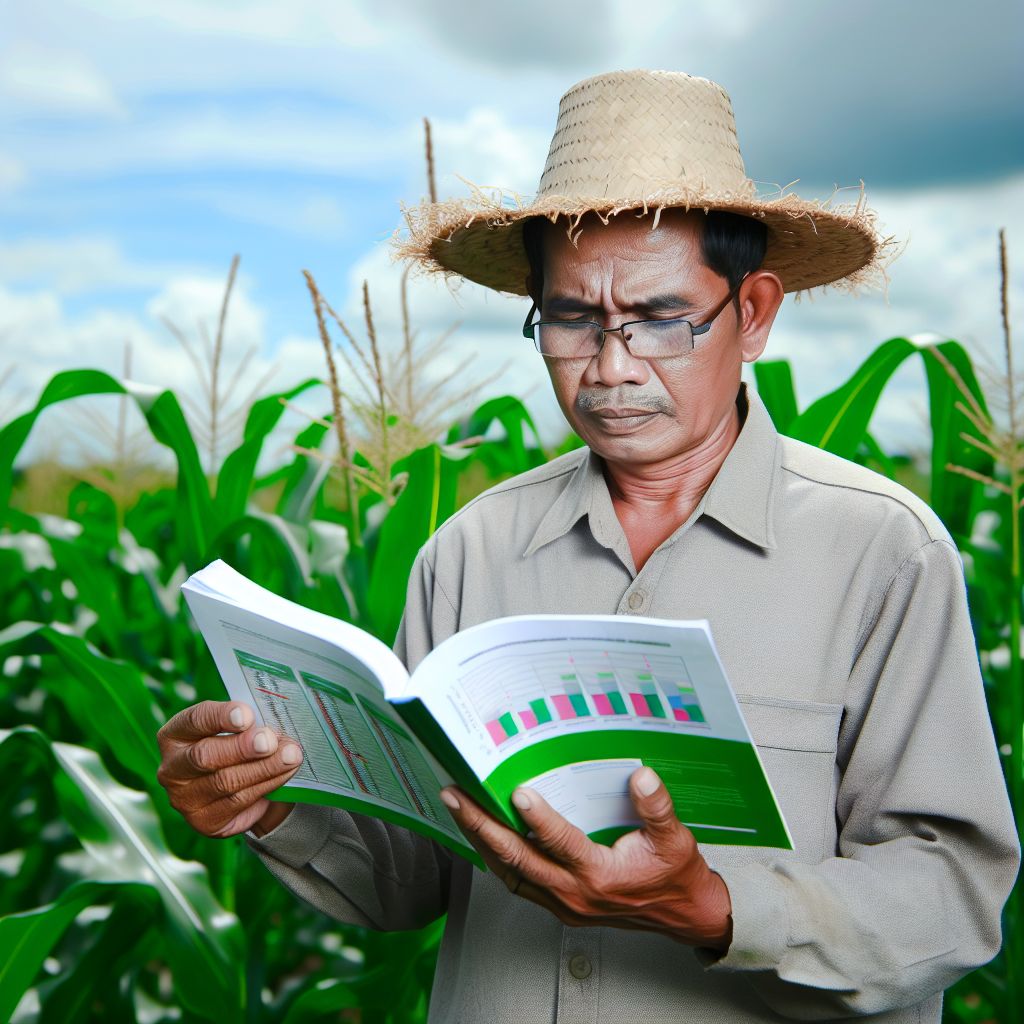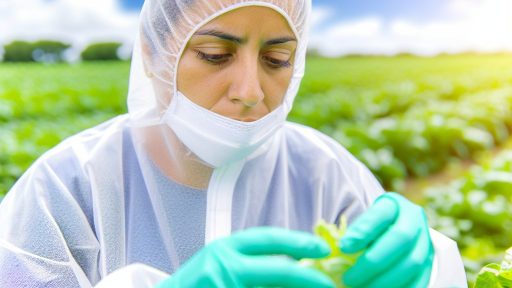Understanding Food Safety Standards for Modern Farmers
Food safety standards play a crucial role in agriculture.
These standards protect consumers and farmers alike.
Understanding these regulations is vital for modern farmers.
Importance for Modern Farmers
Food safety influences market access and consumer trust.
Compliance with safety standards enhances a farm’s reputation.
Moreover, it reduces the risk of foodborne illness outbreaks.
Farmers must prioritize food safety to succeed today.
Key Aspects of Food Safety Standards
Food safety encompasses multiple factors in farming.
These include proper handling, storage, and transportation.
Additionally, safe farming practices ensure product quality.
Farmers should be familiar with local and national regulations.
Benefits of Adhering to Food Safety Standards
Adherence to food safety standards provides numerous advantages.
- It increases buyer confidence in food products.
- It minimizes legal liabilities associated with food safety breaches.
- Furthermore, it promotes sustainability in farming practices.
Implementing Effective Food Safety Practices
Farmers can take several steps to improve food safety.
Training employees on safe food handling is essential.
Regular equipment checks can help maintain hygiene standards.
Transform Your Agribusiness
Unlock your farm's potential with expert advice tailored to your needs. Get actionable steps that drive real results.
Get StartedMoreover, documenting procedures aids in compliance reporting.
Safeguarding Public Health Through Standards
Emphasizing food safety standards is crucial for modern farming.
Understanding these practices safeguards public health.
Ultimately, farmers who prioritize safety will thrive in today’s market.
Overview of Key Food Safety Standards
Introduction to Food Safety Standards
Food safety standards ensure the safe production and handling of food products.
These standards protect consumers from foodborne illnesses.
Key agencies like the FDA and USDA govern these regulations.
Food and Drug Administration (FDA) Standards
The FDA oversees the safety of most food products in the U.S.
It sets standards for food processing and packaging.
Additionally, the FDA regulates food additives, ensuring they are safe.
They enforce labeling requirements on food products.
These regulations help consumers make informed choices about their food.
United States Department of Agriculture (USDA) Standards
The USDA regulates meat, poultry, and egg products.
It ensures that these products meet safety and quality standards.
USDA inspectors examine facilities to maintain compliance.
The agency also provides guidelines for organic farming practices.
Hazard Analysis Critical Control Point (HACCP)
HACCP is a preventive approach to food safety.
It identifies potential hazards in food production processes.
Farmers implement critical control points to mitigate these risks.
This system enhances food safety at various levels of production.
Good Agricultural Practices (GAP)
GAP ensures safe handling and growing of produce.
Farmers follow these practices to minimize contamination risks.
Training employees on hygiene is a vital component.
Regular audits help maintain compliance with GAP guidelines.
Showcase Your Farming Business
Publish your professional farming services profile on our blog for a one-time fee of $200 and reach a dedicated audience of farmers and agribusiness owners.
Publish Your ProfileTraceability Standards
Traceability is crucial for identifying food sources.
It allows for quick responses in case of food safety issues.
Farmers use record-keeping systems to track their products.
This practice enhances overall food safety and consumer confidence.
Understanding the Importance of Food Safety Standards
Understanding food safety standards is essential for modern farmers.
Compliance not only protects consumers but also enhances marketability.
By adhering to these standards, farmers contribute to a safer food supply.
Understanding HACCP (Hazard Analysis Critical Control Point) Principles
Overview of HACCP
HACCP is a structured approach to food safety.
It identifies physical, chemical, and biological hazards.
This system prevents contamination during food production.
By implementing HACCP, farmers ensure consumer safety.
Key Principles of HACCP
HACCP has seven critical principles.
First, conduct a hazard analysis.
This step identifies potential hazards in the production process.
Next, determine critical control points (CCPs).
CCPs are essential for controlling identified hazards.
Then, establish critical limits for each CCP.
These limits may include temperature or pH levels.
Monitoring Procedures
Monitoring procedures help ensure compliance with critical limits.
Farmers must regularly check their processes.
Documentation of monitoring is crucial for accountability.
Corrective actions must be developed for limit breaches.
Verification and Record Keeping
Verification ensures that the HACCP plan is effective.
Regular reviews and audits are necessary.
Farmers should maintain detailed records of all processes.
Effective record keeping enhances food safety accountability.
Training and Implementation
Training employees on HACCP principles is essential.
They must understand their roles in maintaining safety standards.
Implementing HACCP requires commitment and consistent effort.
Additionally, regular refresher training helps maintain high standards.
Uncover the Details: The Role Of Tariffs In Shaping Agricultural Markets Globally
Best Practices for Safe Food Handling on the Farm
Importance of Hygiene
Hygiene plays a crucial role in food safety.
Start by washing your hands frequently.
Use clean water and soap for effective cleaning.
Wear gloves when handling food to avoid contamination.
Sanitize all equipment and surfaces regularly.
Proper Handling of Produce
Always inspect produce for signs of spoilage.
Do not use damaged items for consumption.
Rinse fruits and vegetables thoroughly before use.
Store produce at the correct temperatures to maintain freshness.
Showcase Your Farming Business
Publish your professional farming services profile on our blog for a one-time fee of $200 and reach a dedicated audience of farmers and agribusiness owners.
Publish Your ProfileAdditionally, separate raw and cooked foods in storage.
Preventing Cross-Contamination
Cross-contamination can lead to serious illnesses.
Use separate cutting boards for meats and vegetables.
Avoid using the same utensils for different food types.
Ensure food contact surfaces are pathogen-free.
Regularly clean and sanitize all kitchen areas.
Temperature Control
Temperature control is vital in food safety.
Keep refrigeration units at 40°F or lower.
Cook foods to the appropriate internal temperature.
Use food thermometers to verify temperatures accurately.
Pay attention to safe cooling practices to prevent bacterial growth.
Education and Training
Training farm workers is essential for safety compliance.
Provide regular workshops on food safety practices.
Encourage employees to stay updated on safety regulations.
Use informative materials to reinforce food safety principles.
Monitor and evaluate worker understanding of safety protocols.
You Might Also Like: Key Trade Agreements That Influence Modern Farming Practices
The Role of Technology in Enhancing Food Safety Standards
Introduction to Technology in Agriculture
Technology revolutionizes food safety on farms.
Farmers increasingly use precision agriculture techniques.
These advancements help optimize production and safety.
Data Management and Traceability
Robust data management systems enhance traceability.
Farmers can now track their products throughout the supply chain.
This transparency builds consumer trust and confidence.
Additionally, it enables quick responses to food safety issues.
Smart Sensors and Real-Time Monitoring
Smart sensors play a crucial role in monitoring farm conditions.
They continuously track temperature, humidity, and other factors.
Real-time data helps farmers make informed decisions.
This approach minimizes the risk of foodborne illnesses.
Automation and Robotics
Automation technologies boost efficiency and accuracy.
Robotics perform tasks that traditionally rely on manual labor.
These tools help reduce human error in food handling.
Consequently, they enhance overall food safety on farms.
Blockchain Technology for Transparency
Blockchain technology provides an unchangeable record of transactions.
This innovation promotes transparency in the food supply chain.
Consumers can verify the origin of their food products.
Such verification strengthens food safety protocols.
Mobile Applications for Farmers
Mobile applications offer valuable resources for farmers.
They provide access to information on food safety regulations.
Farmers can receive real-time alerts about foodborne illness outbreaks.
These applications enhance responsiveness to potential risks.
Showcase Your Farming Business
Publish your professional farming services profile on our blog for a one-time fee of $200 and reach a dedicated audience of farmers and agribusiness owners.
Publish Your ProfileFurther Implications of Technological Advances
Technological advancements markedly improve food safety standards.
By adopting modern tools, farmers can mitigate risks effectively.
Ultimately, ensuring food safety benefits producers and consumers alike.
Explore Further: Understanding Pesticide Registration Processes

Implementing Traceability Systems in Agricultural Practices
Overview of Traceability Systems
Traceability systems track food products from farm to table.
They help ensure food safety and quality for consumers.
Moreover, these systems promote accountability among farmers.
Benefits of Traceability for Farmers
Implementing traceability can enhance market access.
Farmers often gain a competitive edge with better transparency.
Additionally, traceability can reduce food safety recalls.
It allows rapid identification of contaminated products.
Key Components of a Traceability System
A robust traceability system includes several essential elements.
First, utilize unique identifiers for products.
Next, maintain detailed records of production processes.
Consider incorporating batch numbers for tracking.
Lastly, include distribution channels in documentation.
Technologies for Traceability Implementation
Modern technologies simplify the implementation of traceability systems.
For instance, barcodes and QR codes can streamline tracking.
Blockchain technology enhances security and transparency in data.
Moreover, mobile apps aid farmers in managing their records.
Steps to Implement a Traceability System
Start by assessing current agricultural practices.
Identify gaps in traceability within your operations.
Next, select proper technologies that fit your needs.
Train all staff members on new traceability procedures.
Finally, continuously monitor and adjust the system for effectiveness.
Challenges in Traceability Adoption
Farmers may face challenges when adopting traceability systems.
Cost can be a significant concern for smaller operations.
Additionally, there may be resistance to change from staff.
To overcome these issues, provide adequate training and support.
Future Trends in Traceability
Traceability in agriculture is evolving rapidly.
Increased regulatory demands are shaping future practices.
Moreover, consumer interest in food transparency continues to grow.
Ultimately, these trends will drive innovation in traceability systems.
You Might Also Like: Understanding the Connection Between Rural Policies and Farming
Compliance with Organic and Sustainable Farming Regulations
Overview of Organic Standards
Organic farming adheres to strict national standards.
These standards govern the production and handling of organic products.
Farmers must avoid synthetic pesticides and fertilizers.
They must also maintain transparency in food labeling.
Certification Process
Farmers seeking organic certification must apply through an accredited body.
They need to provide detailed records of farming practices.
Showcase Your Farming Business
Publish your professional farming services profile on our blog for a one-time fee of $200 and reach a dedicated audience of farmers and agribusiness owners.
Publish Your ProfileThis process typically takes three years to complete.
During this period, farmers must implement organic practices.
Importance of Sustainable Practices
Sustainable farming promotes environmental health and biodiversity.
It also enhances soil quality and water conservation.
Farmers benefit by improving crop resilience and yields.
Moreover, it helps in reducing the carbon footprint of agriculture.
Compliance with Environmental Regulations
Farmers must adhere to local and federal environmental regulations.
They should engage in practices that protect ecosystems.
These may include crop rotation and cover cropping.
Such methods enhance soil fertility and prevent erosion.
Record Keeping and Transparency
Good record keeping is essential for compliance.
Farmers must track inputs and outputs meticulously.
They should also maintain records of sales and distribution.
This documentation supports traceability in the food supply chain.
Staying Informed on Regulations
Regulations frequently change, impacting farming practices.
Farmers should stay updated on legislative updates.
Attending workshops and seminars can provide valuable insights.
Networking with fellow farmers also fosters knowledge sharing.
Training and Education for Farmer and Laborer Food Safety Practices
Importance of Training
Training is essential in ensuring food safety on farms.
It helps workers understand the potential risks associated with food production.
Furthermore, proper education minimizes contamination during harvesting and processing.
Types of Training Programs
Various training programs exist to enhance food safety practices.
On-site training can facilitate learning in a familiar environment.
Online courses offer flexibility for busy farmers and laborers.
Workshops and seminars provide opportunities for hands-on experience.
Key Topics in Food Safety Training
Food safety training should cover several critical topics.
- Personal hygiene practices for workers
- Proper handling and storage of food products
- Sanitation practices for equipment and facilities
- Understanding foodborne pathogens and their prevention
- Emergency procedures in case of contamination
Certification and Compliance
Certification programs verify that farmers and laborers meet food safety standards.
Compliance with local and national regulations is vital for market access.
Certifications may also enhance consumer trust in products.
Continuous Education and Updates
Food safety standards frequently evolve due to new discoveries.
Continuous education helps farmers stay informed about best practices.
Regular updates on regulations ensure compliance and food safety.
Participating in ongoing training builds a culture of safety on the farm.
Additional Resources
The Current US Food Safety System – Ensuring Safe Food – NCBI …




